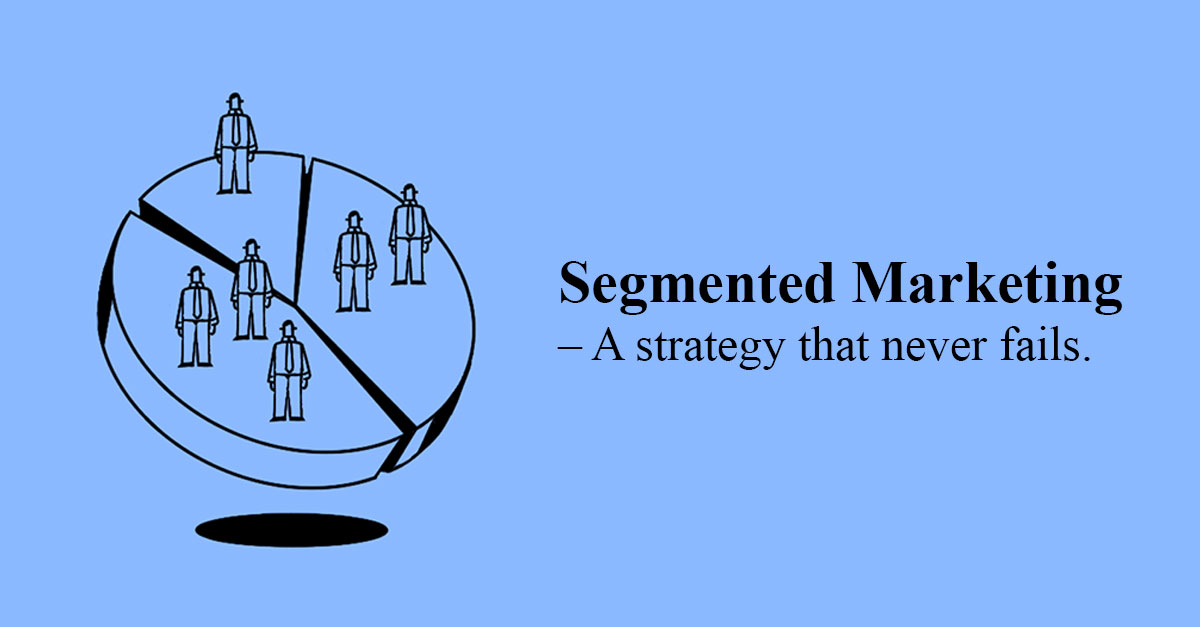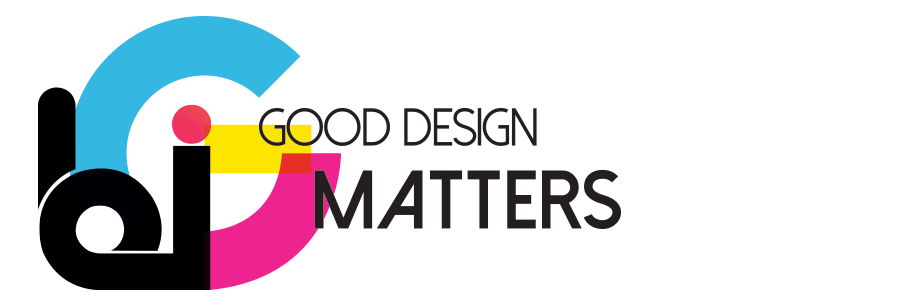Call: +91 99164 51647 | Email: info@brandingenious.com

Segmented Marketing – A strategy that never fails.
Importance of understanding and correctly segmenting your target audience.
First of all, we need to understand why is segmentation of audience necessary while we create marketing strategies and plan our moves around them.
A campaign can be successfully run only if the specific audience relate it to their need and relate is as a means of solution to their pain areas. Of course this is different when the products and services are in the luxury category. Let us see how many categories we can do the segmentation to plan out approach systematically using the correct marketing vehicles and content.
- Industry
- Geography
- Demography
- Psychography
- Behavioural
- Decision Maker
Let us broadly understand what each of them signifies.
Industry wise segmentation
Whenever we have a product / services that is meant for a wide range of audiences, we need to ensure that our content and communication process is rather specific than flat.
For example: If we are providing SEO services and run a leadgen campaign. Let’s consider that we end up with 100 leads. Out of which I do a first level of segmentation industry wise and find out that I have got 20 leads each from FMCG, ITES, Retail, Hospitality and pharmaceutical industry.
If I have to run a follow up creative campaign or send a standard mailer, do you think that all the five different industry segments will connect or relate to it in the same fashion? The answer is simply NO. This is a big reason why, the email campaigns, WhatsApp campaigns fail massively.
Now let us deep dive into further segmentation of the five industries. If I do a detailed profiling I might find that in the Pharmaceutical segment there are companies which manufactures medicines and then there are companies who are into medical equipment and rest are into Med-Tech. Here we need to understand that each of their GTM, target audiences, pain areas are different. Therefore, we will have to create another level of segmentation of the same. Here we need to understand their business and the pain areas. Now it becomes easier to draft content, creatives and communicate to them with the message which addresses their need and the pain areas.
Geography wise Segmentation
Doing a segmentation based on geography opens up new avenues of marketing approaches and use of marketing vehicles more effectively. The Geography wise segmentation should be done in 6 different ways:
- Location (country, state, city, etc.)
- Time zone
- Climate and season
- Cultural preferences
- Language
- Population type and density (urban, suburban, or rural)
Each of these factors of segmentation gives us the clarity in defining our audience clearly and draft our communication creatively and strategically to position our products and services.
For example, in a highly diversified country like India, the communication for positioning the same product and service will have to be different for every state followed by the population type. There are states where emotional branding needs to be used rather than straight forward messaging.
Demography wise Segmentation
In Demographic segmentation we divide the market into smaller categories based on demographic factors, such as age, gender, and income etc. Instead of reaching an entire market, we uses this method to focus our resources into a defined group within that market.
Dividing the market into smaller segments, each with a common variable, allows us to use our time and resources more efficiently. The communication can be strategically customised to give better results.
The common factors of demographic segmentations are:
- Age
- Gender
- Ethnicity
- Income
- Level of education
- Religion
- Occupation
- Family structure
This allows the target audiences to identify with our brand and they feel like we understand their pain areas and their needs, which makes them more likely to do business with us over longer periods.
Psychography wise segmentation
We may not realise consciously, but psychographic segmentation is the primary driving factor in our lives. It’s the invisible factor that guides most of our decision making. That’s because psychographic segmentation determines who we allow into our lives and which social circles we desire to enter.
In the past, marketers could rely primarily on demographic segmentation like age, income, gender or family size to find buyer matches. But today, demographics alone fail to give a holistic picture of our segment.
The right way to start psychographic segmentation is to conduct research about the interests and hobbies of our customers. This is a fairly easy step because the methodology is straightforward and, for the most part, people are willing to talk about their interests.
We will have analyse the mind-sets through the following factors for e.g.:
- Sports, music, hobbies, recreation etc.
- Volunteer groups
- Activities with their kids
- Media preferences
- Social and political Values
- Opinions about current events
- Brand preferences
- Personality types (introvert or extrovert)
- Travelling preferences
- Professional and networking associations
Once we see the patterns in the interests of our customers, the next step is to identify where they come together. For example:
- Facebook groups
- Podcasts
- Reddit Music festivals
- Professional and networking associations
- Video games
- Sporting events
- TV and radio
- Tourist locations
- Blogs
- Religious events
The advantages of psychographic segmentation can be states as follows:
- Better understanding of consumer behaviour by research and analysis of their personalities, lifestyles, or social status etc.
- When there is a customization of products and services is involved, then psychographic segmentation type is very important.
- This provides details about their decision making factors such as lifestyles, interests, opinions, etc.
Behaviour Wise Segmentation
Behavioural segmentation is a method of grouping customers by their behaviour patterns customers’ interactions with their brand, like their purchase history and website interactions. They can also track behaviours that correlate with the customer lifecycle, such as getting married, having a baby or buying a home, and seasonal spending behaviours like holiday shopping.
It can answer questions like How many times they visit your website / online store before purchasing? or Which promotional message – a discount code or a free shipping guarantee – is more likely to nudge them towards a higher-value purchase?
The advantage of Behavioural segmentation broadly is to:
- Identify the most engaged users
- Improving message accuracy
- Providing personalized experiences
- Creates emotional connect
- Helps in building brand loyalty
Behavioural Segmentation can be classified into for types for better understanding:
Segmentation based on behaviour of Usage and purchase.
It can be further classified into factors like:
- Number of interactions with your business does a customer need before proceeding to conversion.
- Various search queries a customer used to locate your brand, product or service.
- Kind of questions a customer asks when using a live chat or virtual assistant etc.
Segmentation based on Events / Occasions
Events / Occasions could be national holidays like Diwali, Eid, Christmas etc. or life occasions, such as a marriage, House warming, vacation etc.
These can also occur in a customer’s daily routine. Purchases like a happy hour round of drinks, caffeinated morning drink, timeline bound sale etc. are all types of occasion-based purchases as they are only bought during those precise times.
Segmentation based on usage benefits
Grouping the data by benefits looked for, helps us to narrow down the specifics of what drives customers to purchase. This reveals which product feature or service aspect they feel most connected to. It can be further categorised into factors like:
- Quality: What makes your product better than your competitors?
- Usage: How will it benefit your customer when they use it?
- Customer Feedback: Are your customers happy with the product or service, or are there areas for improvement?
- USPs: What makes your product unique from other already existing products?
- Additional Benefits: Are there other advantages a customer could receive from purchasing your products or services?
Segmentation based on Customer Loyalty
This helps significantly to zero in on existing repeat customers, their needs, behaviour patterns etc. Besides generating repeat revenue from our business, loyal customers are incredibly useful in terms of referrals, word of mouth, and feedback.
Utilizing the valuable information from this segment can help us to optimize future campaigns, improve our value propositions, strengthen positioning etc. The broadly identifying factors are:
- What were the key behaviours were throughout the customer journey that nurtured loyalty.
- Which customers are the most appropriate or ideal type for loyalty programs.
- What factors are most essential in keeping those segments of customers happy.
- Which ways the value received from loyal customers can be maximized.
Decision Maker Wise Segmentation
This is done mainly for the B2B customers where the decision makers like the CEOs, CFOs, CTOs, CMOs etc. plays the critical role in the buying decision.
Even though the vertical heads, VPs, business heads come up with recommendations with the internal feedback from the users of the organization and the procurement teams, yet in most cases if the C level personnel has set their preferences then the probability of going ahead with that product or services is higher.
This form of segmentation and the positioning goes hand in hand with the Industry wise segmentation. Here the research and analysis of the companies’ sales and finance history is very important to understand the trend they are getting into, understand their future plans. Thus positioning the products / services can be done strategically with the right kind of content marketing.
